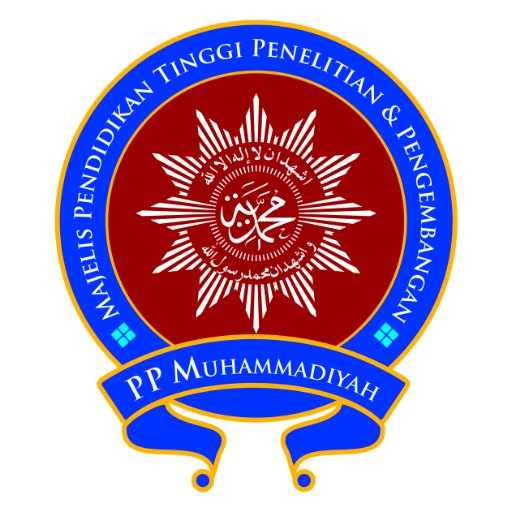Formulation and Evaluation of Physical Stability Natural Acne Gel Based on Aloevera Gel with Essential Oil Blend
DOI:
https://doi.org/10.53017/ujas.163Keywords:
Natural, Essential Oil, Aloevera GelAbstract
This study aims to determine the formulation and evaluation of natural acne gel preparations made from aloe vera gel with a mixture of essential oils where the concentration of aloe vera gel can affect the stability of natural acne gel preparations. The use of herbal cosmetics is preferred because it comes from natural ingredients, is safe, can be used by all skin types, has various choices, is inexpensive, has low side effects, and does not pollute the environment. Organoleptic Test Process, pH Test, Adhesion Test, Spreadability Test, Stability Test (Cycling Test) for evaluation of natural acne gel preparations. The results showed that the higher the concentration of aloe vera gel, the higher the pH, dispersion, and stability. By paying attention to the data from each formula, it can be concluded that the most optimal preparation is the F3 preparation which shows the appropriate pH results, appropriate dispersion and homogeneous stability.
Downloads
References
L. Pangaribuan, “Efek Samping Kosmetik Dan Penangananya Bagi Kaum Perempuan,” Jurnal Keluarga Sehat Sejahtera, vol. 15, no. 2, pp. 20–28, 2017, doi: 10.24114/jkss.v15i2.8771.
N. Istiqomah, N. I. Hanifa, and K. Sukenti, “Study of Ethno Cosmetics Natural Care of Batujai Village Community, West Praya, Central Lombok,” Jurnal Biologi Tropis, vol. 21, no. 1, p. 32, 2021, doi: 10.29303/jbt.v21i1.2342.
E. Kurniawan, N. Sari, Ita, and S. Sulhatun, “Ekstraksi Sereh Wangi Menjadi Minyak Atsiri,” Jurnal Teknologi Kimia Unimal, vol. 9, no. 2, p. 43, 2020, doi: 10.29103/jtku.v9i2.4398.
A. Kevin, C. Kusuma, E. Hertati, K. A. Fitriani, and V. Wirawan, “Analisa Tren Skin Care Natural Terhadap Preferensi Konsumen,” Indonesian Business Review, vol. 1, no. 1, pp. 130–142, 2018, doi: 10.21632/ibr.1.1.130-142.
R. Rachmaniar, K. Haruman, nurlita sari Nitta, and B. Theo, “FORMULASI DAN EVALUASI GEL AROMATERAPI MINYAK ATSIRI BUNGA KENANGA (Cananga odorata) SEBAGAI ANTIDEPRES,” Technology, Indonesian Journal of Pharmaceutical Science and, vol. IV, no. 2, pp. 36–44, 2015.
N. Aprilianti, Y. Sastyarina, L. Penelitian dan Pengembangan Kefarmasian, and F. Tropis, “Optimasi Polivinilalkohol (PVA) Sebagai Basis Sediaan Gel Antijerawat Proceeding of Mulawarman Pharmaceuticals Conferences,” Mulawarman Pharmaceutical Conference, pp. 17–21, 2020.
N. K. Kalagatur, V. Mudili, J. R. Kamasani, and C. Siddaiah, “Discrete and combined effects of Ylang-Ylang (Cananga odorata) essential oil and gamma irradiation on growth and mycotoxins production by Fusarium graminearum in maize,” Food Control, vol. 94, no. March, pp. 276–283, 2018, doi: 10.1016/j.foodcont.2018.07.030.
F. O. Nurhayani, A. S. Wulandari, and T. K. Suharsi, “The Floral Morphology and Anatomy of Kenanga (Cananga odorata (Lam.) Hook.f. & Thomson),” IOP Conference Series: Earth and Environmental Science, vol. 394, no. 1, 2019, doi: 10.1088/1755-1315/394/1/012034.
R. Vaiga and M. Sadono, “Gas Chromatography Mass Spectrophotometry Profile of Curcuma Xanthorrhiza Roxb,” Indigenous Science and Technology, vol. 1, no. 1, pp. 25–30, 2019.
E. Rahmat, J. Lee, and Y. Kang, “Javanese Turmeric (Curcuma xanthorrhiza Roxb.): Ethnobotany, Phytochemistry, Biotechnology, and Pharmacological Activities,” Evidence-based Complementary and Alternative Medicine, vol. 2021, 2021, doi: 10.1155/2021/9960813.
M. Paw, T. Begum, and S. K. Pandey, “Chemical Composition of Citrus limon L . Burmf Peel Essential Oil from North Chemical Composition of Citrus limon L . Burmf Peel Essential Oil from North East India Manabi Paw , Twahira Begum , Roktim Gogoi , Sudin Kumar Pandey & Mohan,” Journal of Essential Oil Bearing Plants, no. April, 2020, doi: 10.1080/0972060X.2020.1757514.
M. Paw, T. Begum, R. Gogoi, S. K. Pandey, and M. Lal, “Chemical Composition of Citrus limon L. Burmf Peel Essential Oil from North East India,” Journal of Essential Oil-Bearing Plants, vol. 23, no. 2, pp. 337–344, 2020, doi: 10.1080/0972060X.2020.1757514.
E. S. Hartatie, I. Prihartini, W. Widodo, and A. Wahyudi, “Bioactive Compounds of Lemongrass (Cymbopogon citratus) essential oil from different parts of the plant and distillation methods as natural antioxidant in broiler meat,” IOP Conference Series: Materials Science and Engineering, vol. 532, no. 1, 2019, doi: 10.1088/1757-899X/532/1/012018.
S. Kabir Mumu and M. Mahboob Hossain, “Antimicrobial Activity of Tea Tree oil against Pathogenic Bacteria and Comparison of Its Effectiveness with Eucalyptus Oil, Lemongrass Oil and Conventional Antibiotics,” American Journal of Microbiological Research, vol. 6, no. 3, pp. 73–78, 2018, doi: 10.12691/ajmr-6-3-2.
M. S. M. Abd El Kareem, M. A. Rabbih, H. O. Elansary, and F. A. Al-Mana, “Mass Spectral Fragmentation of Pelargonium graveolens,” Processes, vol. 8, no. 128, pp. 1–19, 2020.
A. Lohani, A. Verma, G. Hema, and K. Pathak, “Topical Delivery of Geranium/Calendula Essential Oil-Entrapped Ethanolic Lipid Vesicular Cream to Combat Skin Aging,” BioMed Research International, vol. 2021, 2021, doi: 10.1155/2021/4593759.
C. Wei, Z. Ma, J. Qiao, J. Lin, and G. Li, “Effects of different drying methods on volatile composition of Melaleuca alternifolia essential oil,” IOP Conference Series: Earth and Environmental Science, vol. 559, no. 1, 2020, doi: 10.1088/1755-1315/559/1/012010.
N. Puva?a et al., “Tea tree (Melaleuca alternifolia) and its essential oil: Antimicrobial, antioxidant and acaricidal effects in poultry production,” World’s Poultry Science Journal, vol. 75, no. 2, pp. 235–246, 2019, doi: 10.1017/S0043933919000229.
G. Eugresya, C. Avanti, and S. A. Uly, “Pengembangan Formula dan Uji Stabilitas Fisik-pH Sediaan Gel Facial Wash yang Mengandung Ekstrak Etanol Kulit Kayu Kesambi,” MPI (Media Pharmaceutica Indonesiana), vol. 1, no. 4, pp. 181–188, 2018, doi: 10.24123/mpi.v1i4.769.
A. L. Yusuf, E. Nurawaliah, and N. Harun, “Uji efektivitas gel ekstrak etanol daun kelor (Moringa oleifera L.) sebagai antijamur Malassezia furfur,” Kartika?: Jurnal Ilmiah Farmasi, vol. 5, no. 2, p. 62, 2017, doi: 10.26874/kjif.v5i2.119.
B. Iskandar, S. E. B. Sidabutar, and L. Leny, “Formulasi dan Evaluasi Lotion Ekstrak Alpukat (Persea Americana) sebagai Pelembab Kulit,” Journal of Islamic Pharmacy, vol. 6, no. 1, pp. 14–21, 2021, doi: 10.18860/jip.v6i1.11822.
F. Farmasi, U. Gadjah, L. T. Farmasi, F. Farmasi, and U. Gadjah, “Formulasi Gel Minyak Atsiri Sereh dengan Basis HPMC dan Karbopol,” vol. 14, no. 2, pp. 87–95, 2018.
Downloads
Published
How to Cite
Issue
Section
License
Copyright (c) 2022 Sucia Rahmadani Nurlaila, Ayu Desi Rachmadani, Kun Harismah

This work is licensed under a Creative Commons Attribution-NonCommercial 4.0 International License.





